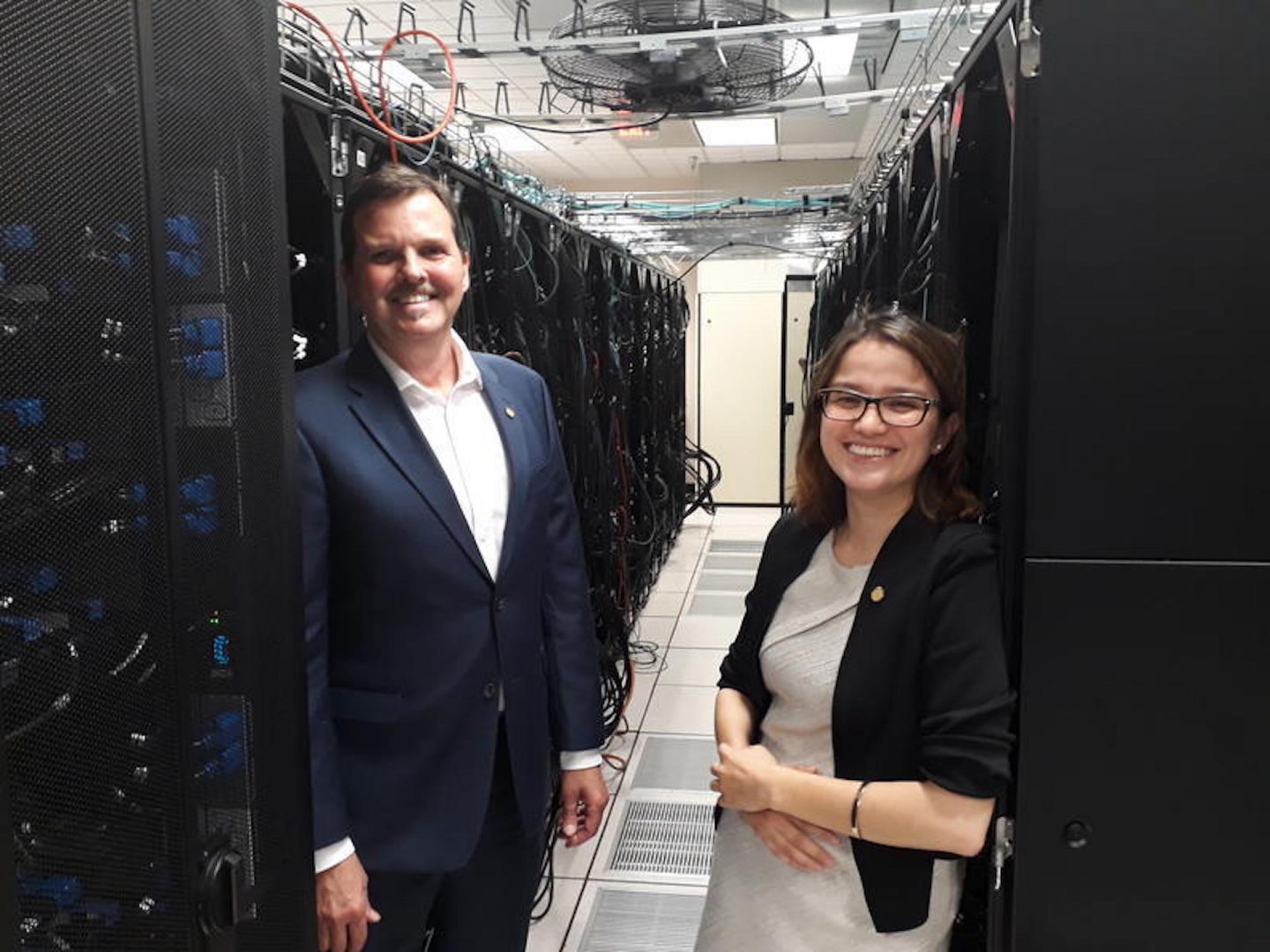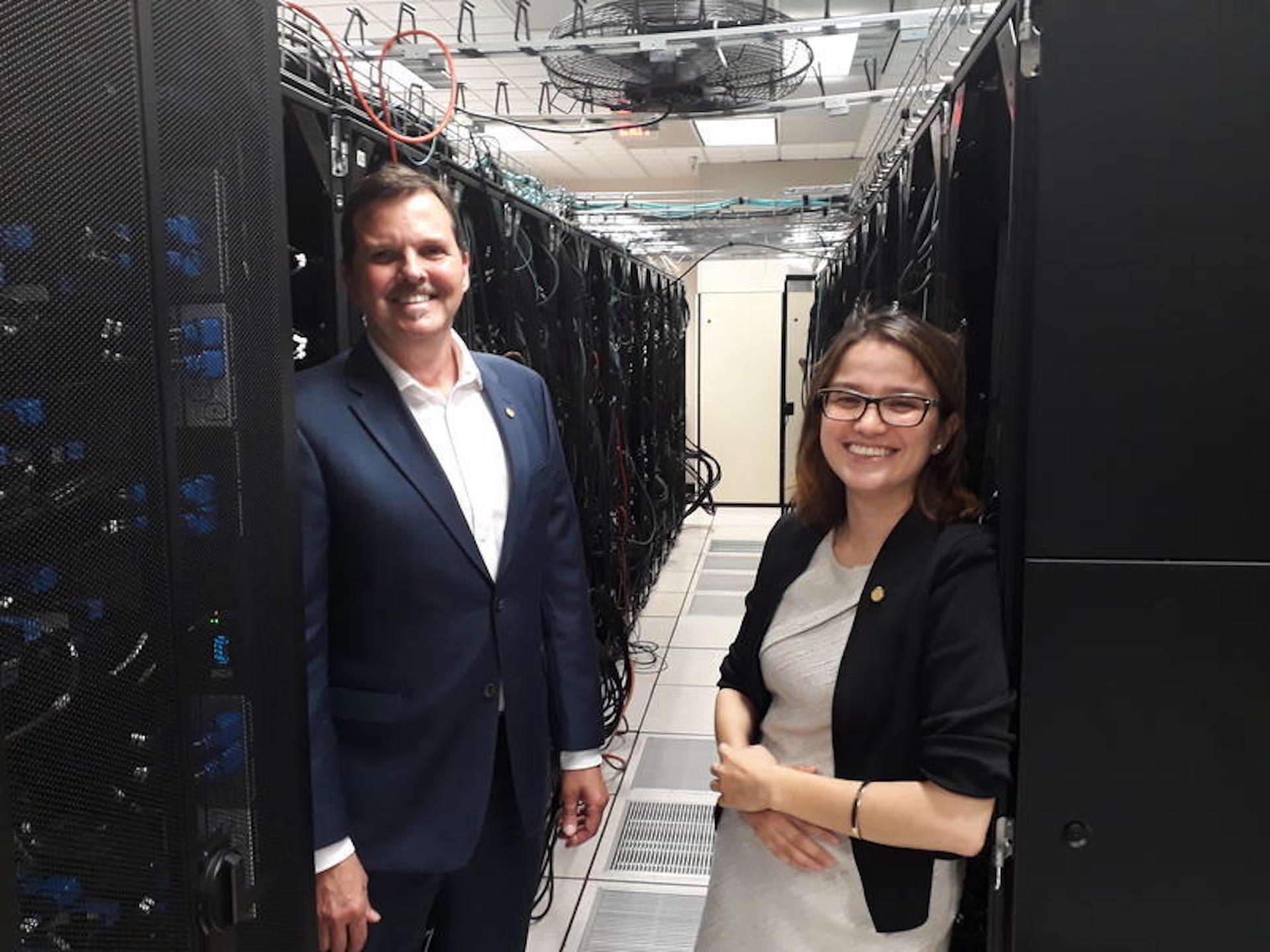
Chief Scientist Nick Nystrom (left) and Paola Buitrago, director of artificial intelligence and big data, of the Pittsburgh Supercomputing Center.
Sarah Boden / WESA

Chief Scientist Nick Nystrom (left) and Paola Buitrago, director of artificial intelligence and big data, of the Pittsburgh Supercomputing Center.
Sarah Boden / WESA

Sarah Boden / WESA
Chief Scientist Nick Nystrom (left) and Paola Buitrago, director of artificial intelligence and big data, of the Pittsburgh Supercomputing Center.
(Pittsburgh) — The Pittsburgh Supercomputing Center has released 3D anatomical data and genetic sequences of tissues from seven organs, including the heart, kidney, and small and large intestines.
This is the inaugural data release from the Human BioMolecular Atlas Program, which aims to map the human body using article intelligence. The 3D atlas has a strong focus on single-cell data and categorizing different cell types.
“Not by what [the cells] look like in the microscope, which is completely ambiguous, but what their genes are actually doing. What is the cell’s function? Understanding where the cells are in tissues. Where different types of cells [are,] how they’re co-located,” said Nick Nystrom, the supercomputing center’s chief scientist.

Sarah Boden / WESA
Chief Scientist Nick Nystrom (left) and Paola Buitrago, director of artificial intelligence and big data, of the Pittsburgh Supercomputing Center.
Nystrom estimates that it would require approximately 1,000 to 4,000 laptop computers to map the human body. That’s is why the supercomputing center is being used for the project, in collaboration with the National Institutes of Health Common Fund, the National Heart, Lung, and Blood Institute, the National Institute of Biomedical Imaging and Bioengineering, and the National Institute of Diabetes and Digestive and Kidney Diseases.
The supercomputer combs through tissue samples submitted by more than 100 donors to uncover patterns and features in genes that researchers could otherwise miss.
“That’s where machine learning, AI techniques are going to be invaluable because it’s just too much data for humans to sift through,” he said.
The Human Atlas aims to keep adding to its donor library so that it contains samples from people who comprise a wide variety of ages, body types and ethnicities.
“How do you relate a lung of a 200 kg person to a 75 kg person? They’re all different,” said Nystrom. “[The human atlas is] analogous to a longitude-latitude system for finding your away around different organs so you can compare them and do science across them.”
Scientists say this work will then understand how various diseases progress, which might lead to cures for rare genetic illnesses.

A collection of interviews, photos, and music videos, featuring local musicians who have stopped by the WITF performance studio to share a little discussion and sound. Produced by WITF’s Joe Ulrich.
The days of journalism’s one-way street of simply producing stories for the public have long been over. Now, it’s time to find better ways to interact with you and ensure we meet your high standards of what a credible media organization should be.